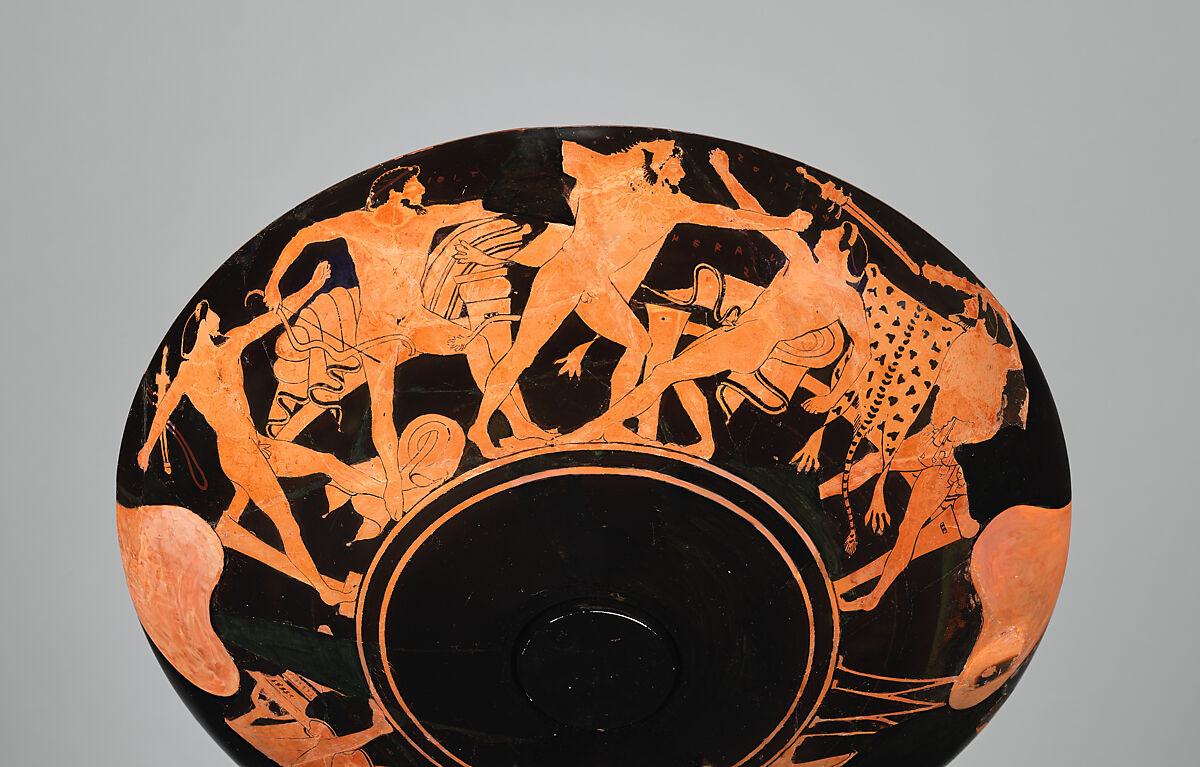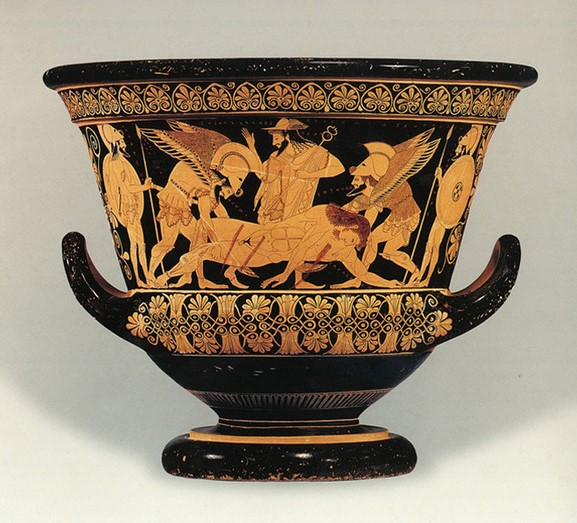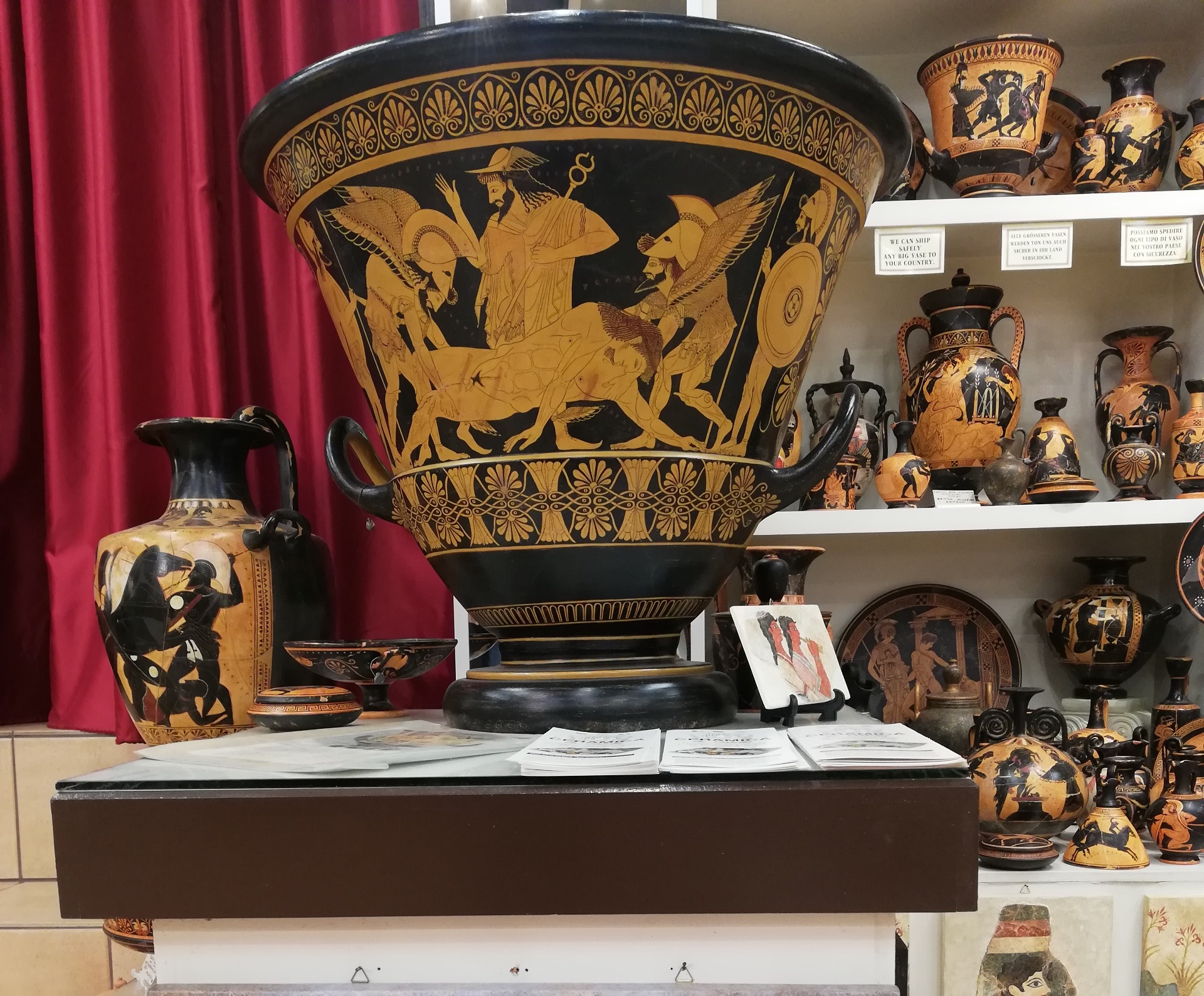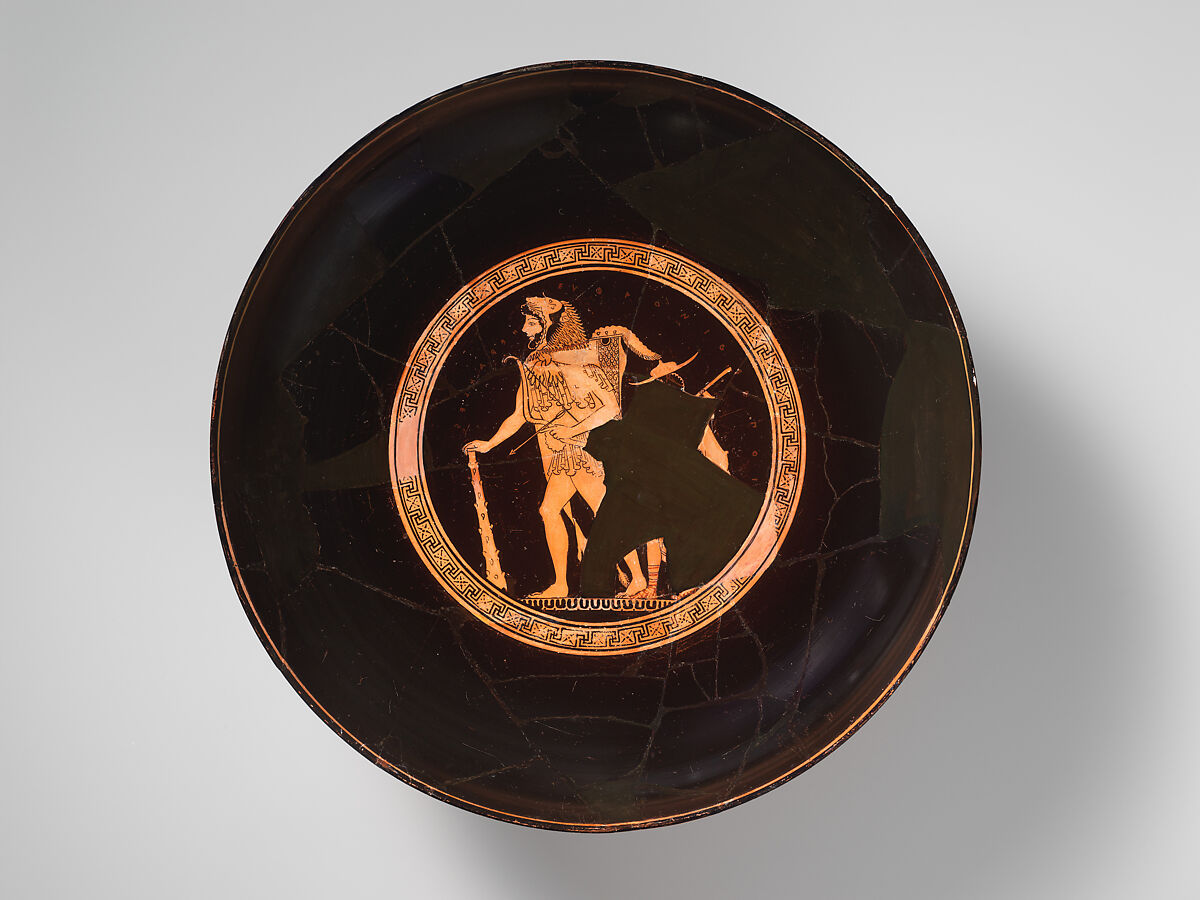Euphronios 'εποίησεν - (made)
He is one of the greatest artists of all the eras of the ancient Greek world. He must have started working as a vase painter around 520 BC and stopped around 500 BC. However, from 500 - 470 BC on several kylix, we find the signature "Euphronios 'εποίησεν" although they are painted by Onesimus painter. This could mean that Euphronios from 500 BC was exclusively engaged in the making of vases and even kylix. It is also possible that the verb "made" does not refer to the potter of these kyliks, but to the owner of the ceramic workshop. He collaborated with the potters Euxitheos and Cachrylion, while around 480 BC he dedicated a votive offering to Athena Hygeia on the Acropolis. Probably, as we can deduce from the subjects of his vases, he was on friendly terms with the Peisistratids, while a "portrait" of him has survived on a "psykter" (PAUL GETTY MUSEUM, U.S.A.) painted perhaps by Smikros with whom he certainly had close relations.
As all great artists, he conveys certain messages through his works. On above Krater:
1. By depicting Zeus's son (Sarpedon) dead, being carried to his homeland by Sleep and Death, under the watchful eye of Hermes, he alleviates the pain of mortals for the death of their loved ones, since he even presents the children of the gods dying.
2. The gods themselves take care of the dead, but their immortality is ensured only by burial in their homeland, a supreme duty of the living towards them.
Euphronios Krater
The
"Euphronian Krater" (also known as the "Sarpedon
Krater") is a famous ancient Greek red-figure vase, a great work
by the vase painter Euphronios, created around 515-510 BC. It depicts
the scene of the transfer of the dead Sarpedon from Sleep and Death,
while the reverse side depicts 5 hoplites, probably Trojan and Lycian
soldiers, preparing to avenge the death of Sarpedon (son of Zeus and
Troas in Lycia), who had been to Troy as an ally of Priam. The vase
was found in Etruria and, after a long period at the
Metropolitan Museum of Art in New York, was repatriated to
Italy.
Characteristics:
Type: Goblet-shaped
krater (vessel for mixing wine with water).
Dimensions:
Height 55,1 cm. and diameter 55 cm, Content: 45 liters.
Date:
515-510 BC.
Technique: Red-figure style.
Inscriptions:
It bears the inscriptions "Euxitheus created" and "Eufronios
wrote", which refer to the potter and the vase painter
respectively.
Museum: National Etruscan Museum
A few words about the famous artist
Euphronios
is one of the most important painters of early red-figure vase
painting in Attica. His painting work dates from between 520 and 505
BC, in the period known as the Early Archaic Red-figure Rhythm.
However, it seems that during his period of maturity Euphronios
turned to other specialties within the framework of
ceramics.
He is the inspirer of the style of
the so-called Pioneers in Attic vase painting. This workshop group,
which flourished in the last quarter of the 6th century BC, is
associated with important developments in ancient Greek painting. The
Pioneers were the first vase painters to depict the human body in
various poses, following trends that prevailed in sculpture at the
same time. Euphronios was particularly interested in the detailed
rendering of the myology in the bodies he painted, and his love of
detail extended to the rendering of the eyelids in the eyes of his
figures. He introduced new iconographic themes, such as the transfer
of Sarpedon from the winged Sleep and Death or the struggle of
Hercules with Antaeus. Another element that distinguished him from
the other Pioneers is that he preferred to paint large vessels,
usually calyx-shaped kraters.




